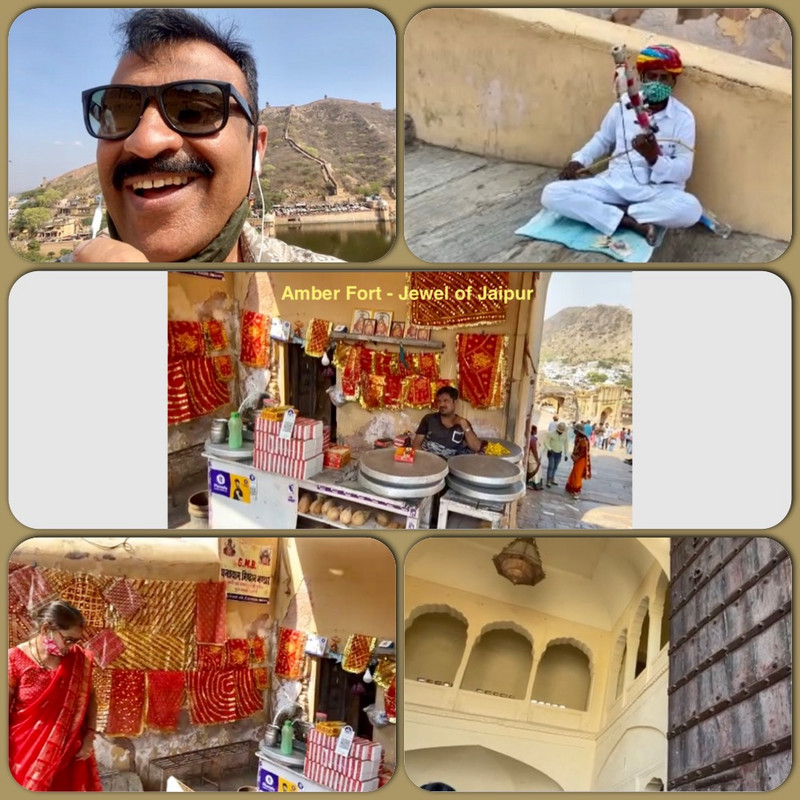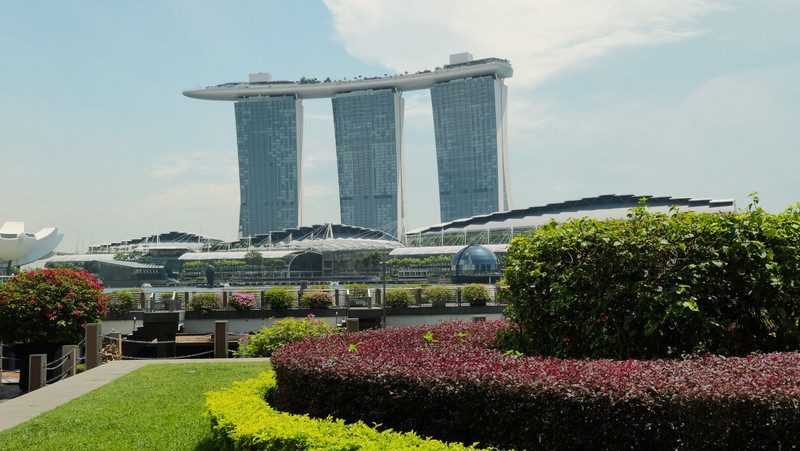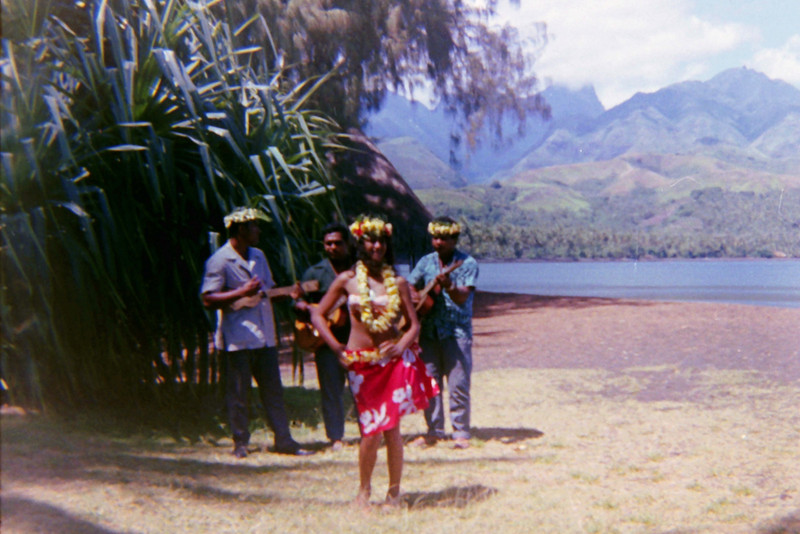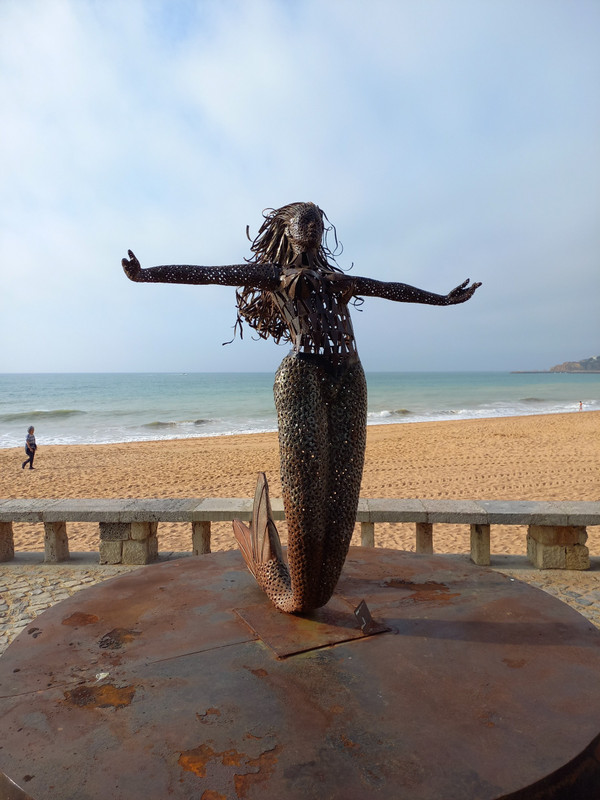The historic hill fort rises above the town of Amer (it is sometimes called Amer Fort), which was the capital of the Kuchwaha Rajputs from the 11th to the 18th century. Construction began in 1592 by Maharaja Man Singh, in the army of the Mughal emperor Akbar. In shades of honey and rose stone, white marble and gilt decor, Amber Fort is more of a palace than a fortress, and the design is a unique mix of Hindu and Muslim styles.
Dilip was our virtual guide & as he climbed the steps he stopped for breath and we could listen to the musician.
We entered through Sun Gate, the palace is divided into four main sections, each having its own entry gate and courtyard. The Suraj Pol (Sun Gate) is the main entry.
The first courtyard is where armies would hold victory parades with their war bounty on their return from battles, and were also witnessed by the Royal familys women folk through the latticed windows. This gate faces to east, to the rising sun, hence named
Due to timescale & signal we werent able to visit all the courtyards but what we saw was very interesting.
The oldest part of the in 1599, includes the Palace of Man Singh and the zenana, womens quarters. In the centre of the zenana is a pavilion, and the wives rooms were arranged around the courtyard.
The second courtyard, houses the Hall of Public Audience, built with a double row of columns, built on a raised platform with 27 colonnades, each mounted with an sculpture, with galleries about it. Here, the King would hear and receive petitions from the public.
Maota Lake at the foot of a cliff, is said to contain a Lingam. According to ancient folklore, the state of Amber to an end when the stone submerged. The lake itself is a beautiful sight, with a garden island, located in the centre.









